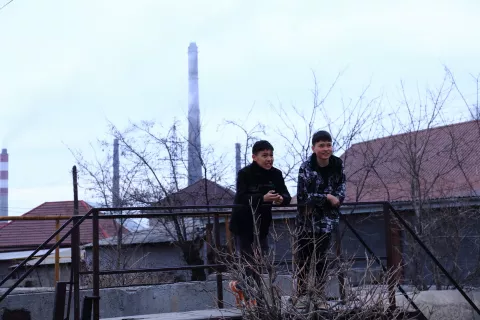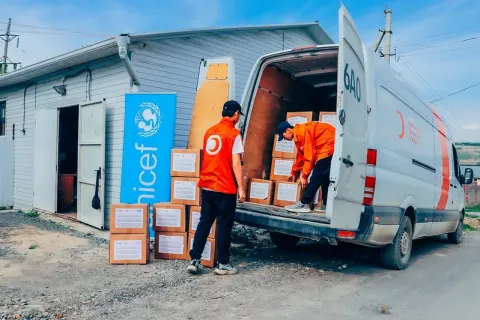Becoming multilingual is child’s play
Language learning is visual and fun at the Kelechek kindergarten, located in the village of Nariman in Kyrgyzstan’s southern Osh province. A relatively large proportion of Kyrgyzstan’s Uzbek ethnic minority live in Osh and neighboring Batken province.
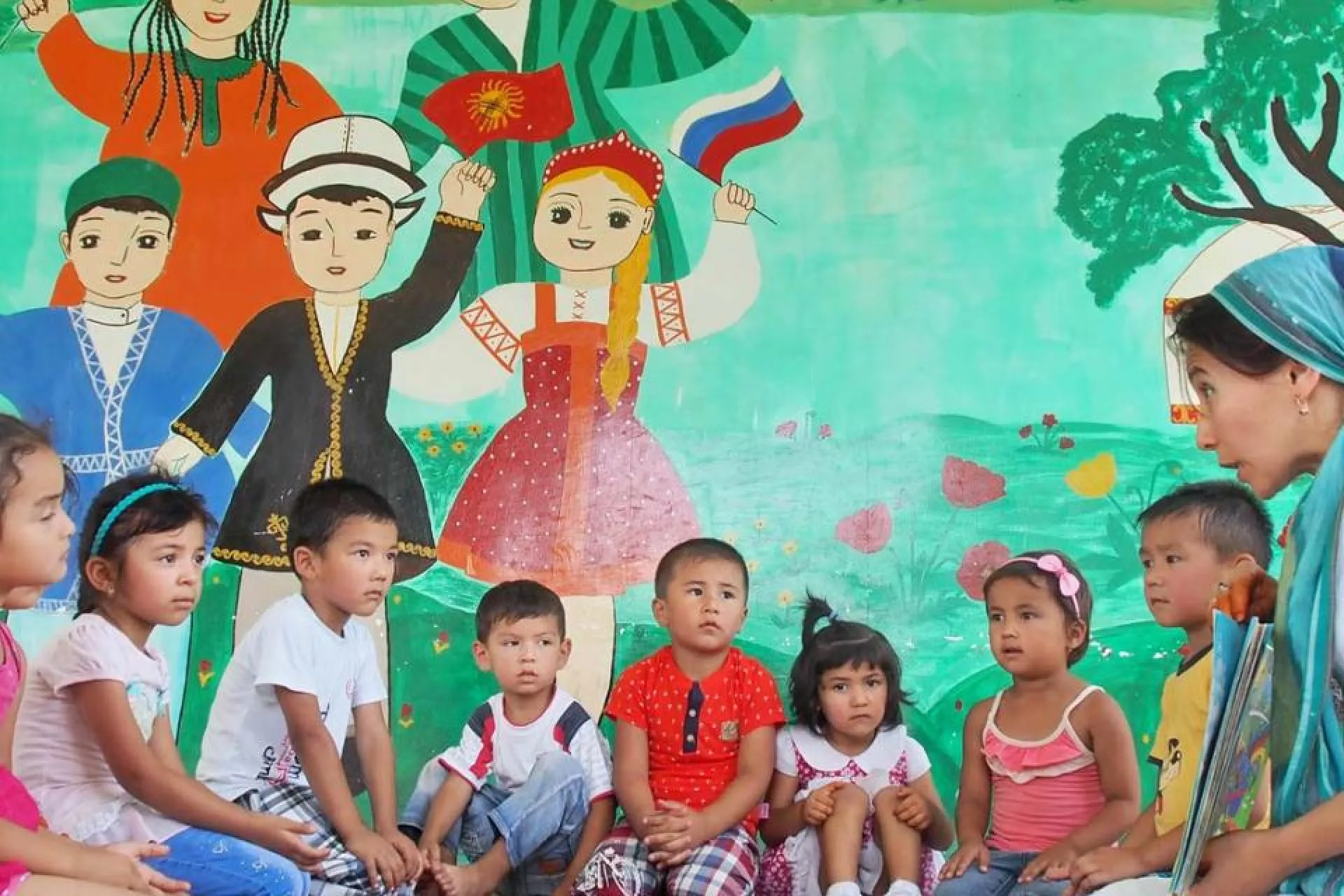
Sakhiba Abdullaeva looks around at the four-year-olds sitting in a half circle in front of her, and she can tell that some of them did not understand what she just explained in Russian. The teacher promptly picks up a green scarf and puts it on. It’s not just any scarf – it’s the one that tells the children she’s now an Uzbek speaker.
Sakhiba Abdullaeva looks around at the four-year-olds sitting in a half circle in front of her, and she can tell that some of them did not understand what she just explained in Russian. The teacher promptly picks up a green scarf and puts it on. It’s not just any scarf – it’s the one that tells the children she’s now an Uzbek speaker.
She repeats her explanation, now in their native tongue, before taking off the scarf and once again repeating it in Russian – and the faces light up in comprehension.
Language learning is visual and fun at the Kelechek kindergarten, located in the village of Nariman in Kyrgyzstan’s southern Osh province. A relatively large proportion of Kyrgyzstan’s Uzbek ethnic minority live in Osh and neighboring Batken province.
Dreaming to teach
Kyrgyzstan, Kyrgyz is the state language, while Russian has the status of official language. Not knowing either of these two languages puts children at a disadvantage.
Up until 2015, the language of instruction was Uzbek for all children at Kelechek kindergarten. But that year, a UNICEF-supported pilot project of multilingual instruction was started for one of its nine groups. Sakhiba, the teacher, quickly became an enthusiast:
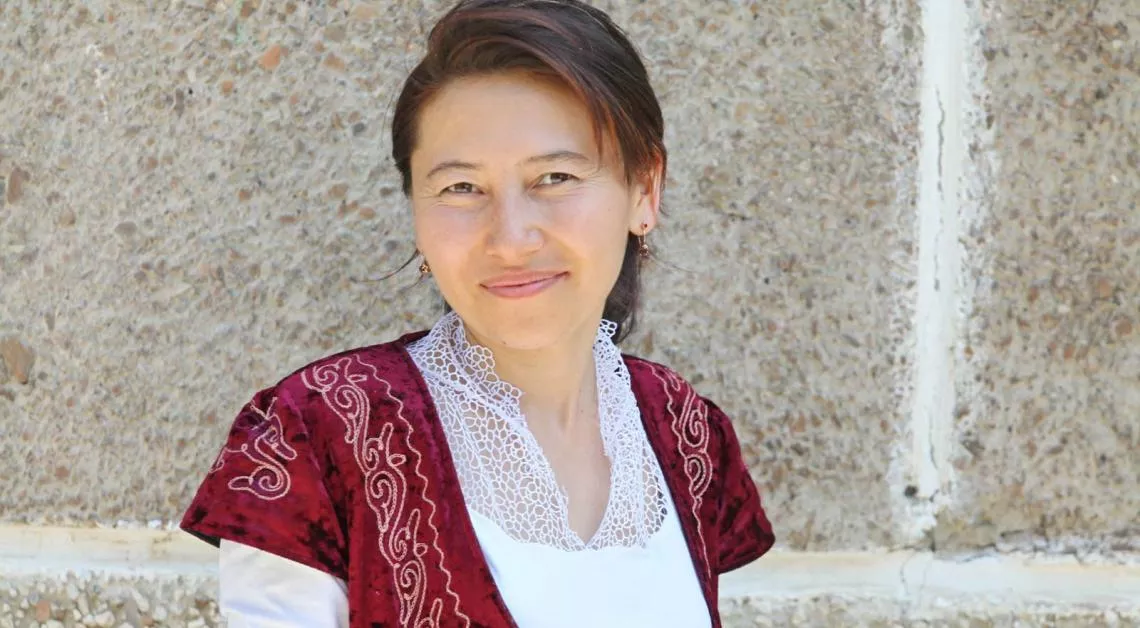
In the past, I was a migrant worker in Russia. I was paid well enough, but I did not get any pleasure from the work. Here, every day is meaningful to me. Even in my dreams at night, I have been searching for the best way to explain something to the children in three languages!
A hat on the door
The effort made by Sakhiba and other staff has paid off. The pilot is a success, and this year, the kindergarten administration has decided to make two more classes multilingual.
Nowadays, when the girls and boys who attend Kelechek arrive in the morning and see a kalpak – a traditional high-crowned hat – on the door, they know that today they will speak only in Kyrgyz. And so, when they enter, they greet their teacher with a ‘salamatsyzby’ – the polite ‘hello’ in Kyrgyz. Sakhiba welcomes them wearing a Kyrgyz chapan overcoat.
On other days, the children will arrive to find a matryoshka on the door – the nesting doll means it’s Russian language day. Or a topu skull cap – which tells them they will be speaking in Uzbek.
The language learning is integrated with the teaching of regular subjects according to state learning standards; this approach is seen as more efficient than teaching languages separately from other subjects.
Muhayo speaks three languages
Dilnoz Nabieva is a volunteer at the kindergarten. Her daughter Muhayo attended the first multilingual group here:
“On the very first day, when I took Muhayo home from kindergarten, we had this exchange:
- Mommy, do you know what we ate today?
- What did you eat?
- We had a soup with kukuruza [corn]!
- What is kukuruza?
- Dumbol!
- You know that word?
- Yes, I do! kukuruza is the Russian word for dumbol!”
“On the third or fourth day, she started telling us, “Grandmother, please, speak Russian!” “Dad, you should also learn Russian and Kyrgyz!” These days, if I ask something in Russian, she may reply in Kyrgyz. So now she speaks three languages,” Dilnoz says.
Since multilingual instruction was introduced in the Kelechek kindergarten, parents have become more engaged, too, Sakhiba explains. More of them attend parents’ meetings, and even try to learn new languages themselves.
I know from personal experience that knowing languages improves understanding between people of different nationalities,” says Dilnoz Nabieva. Her daughter Muhayo attended the first multilingual group at Kelechek kindergarten
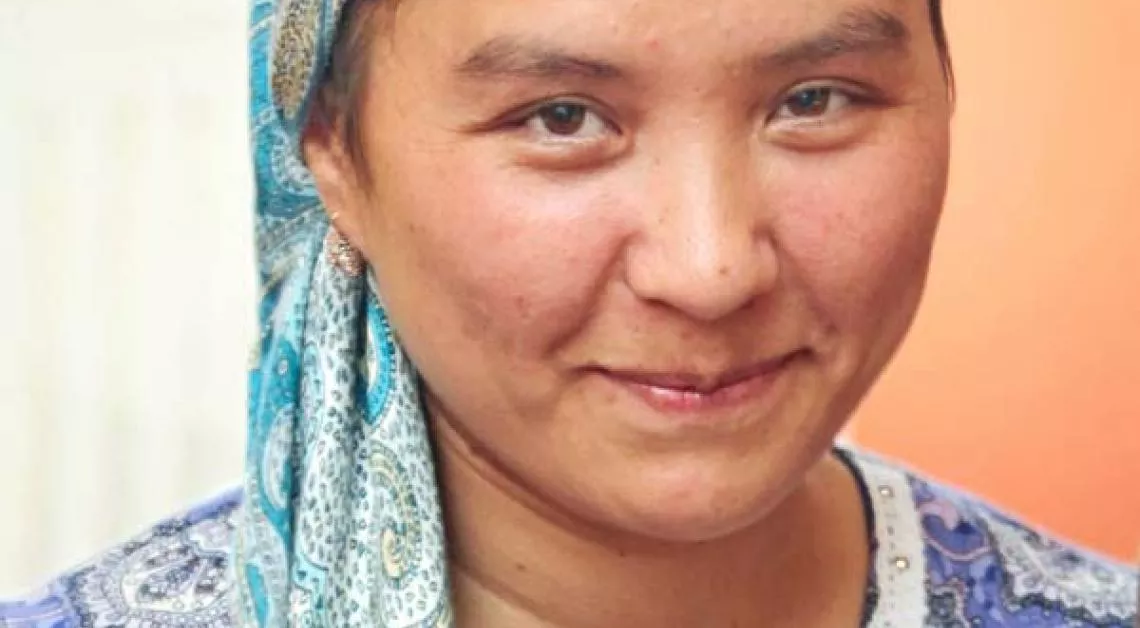
Multilingualism as peacebuilding
Kelechek is one of five preschools, 56 schools and two universities in Kyrgyzstan where the Ministry of Education and Science, with UNICEF support, is piloting multilingual education. The project aims to promote multilingualism, foster an environment enabling broader integration, especially of minorities, while promoting protection of their rights. By gaining multilingual skills, children from ethnic minorities have better opportunities to access jobs and higher education later in life. The program is funded by the United Nations Peacebuilding Fund.
Social and economic inequality in Kyrgyzstan often coincides with ethnic fault lines. Osh, which borders on both Uzbekistan and Tajikistan, scores low compared to most other regions on many development indicators.
In 2010, Osh province was at the centre of a violent conflict between ethnic Kyrgyz and Uzbeks, in which several hundred people were killed and some 400,000 displaced. Although a successful peace recovery has led to relative political stability, the situation remains precarious.
“Any problem can be resolved”
Dilnoz Nabieva firmly believes in multilingualism as a means to build trust and harmony: “I know four languages – I speak Russian, Uzbek, Kyrgyz and a little English. I know from personal experience that knowing languages improves understanding between people of different nationalities. And when there is understanding, any question can be resolved,” she says.



